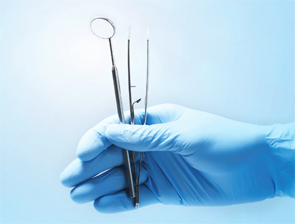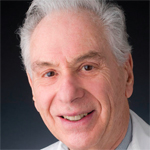
Rheumatologists see patients with SSc much more often than a dentist, and patients will complain about their oral opening, dry mouth, and more.
Alim Yakubov/shutterstock.com
Oral health is not frequently considered within the sphere of a rheumatologist’s practice. However, recent results published by the Canadian Scleroderma Research Group (CSRG) point out the importance of assessing oral health in patients with systemic sclerosis (SSc).
Result of 3-Year Grant
Between 2008 and 2011, 163 patients with SSc and 231 controls were entered into a multisite, cross-sectional study. “[This study is] the result of a three-year grant from the Canadian Institute of Health Research for ‘The impact of oral–facial manifestations of SSc on health-related quality of life (QoL),’” says Mervyn Gornitsky, FRCD(C), professor emeritus in the faculty of dentistry at McGill University in Montreal, Canada. “Recruitment for both controls and patients was greater in number than had ever been done.”
Seven CCRG sites throughout Canada were involved with recruitment. Dentists from various sites performed detailed, standardized examinations of the oral and dental tissues. X-rays were taken as needed and read by two (blinded) oral radiologists.
Control subjects were drawn from a cohort who were being seen for mechanical joint problems. They were matched by gender and age and were recruited from the same study sites. Over 90% of the cohort was female, with a mean age of 56 years.
Diffuse disease was present in over 28% of the group and the mean duration of disease was 13.7 years. The mean physician global assessment of disease severity was 2.9.

Dr. Gornitsky
Quality of life was measured using the Oral Health Impact Profile. This is a 49-question instrument that looks at seven dimensions of oral health, including functional limitations, physical pain, psychological discomfort, physical disability, psychological disability, social disability and handicap.
“Rheumatologists see patients with SSc much more often than a dentist,” says Dr. Gornitsky. “Patients will complain about their oral opening, dry mouth, painful teeth and bleeding gums. Rheumatologists should be asking their patients if they are having trouble chewing and oral health questions with the intent of sending them to their dentist for treatment.” Questions to ask include:
- Do you have problems with your teeth?
- Do you have any problems chewing?
- Are there any sores in your mouth?
- Do you have any symptoms of gastroesophageal reflux disease (GERD)?
- Do you have problems with saliva production or dry mouth?
The research turned up some interesting results for rheumatologists in this sphere.
“The patients had more decayed teeth, more periodontal disease (PD), less saliva production, and their mouth opening was smaller than controls,” says Murray Baron, MD, chief in the Division of Rheumatology at Jewish General Hospital in Montreal. “The rheumatologist needs to be aware that these problems exist and to then discuss them with our patients.”
Evolution of Dry Mouth
One interesting finding was the evolution of dry mouth in SSc patients. The presence of at least one Sjögren’s syndrome-related antibody (either RO 52/TRIM-21, SSA/Ro60 or SSB/LA) was associated with decreased saliva production. However, none of the disease severity scores were significantly associated with saliva production. Missing teeth were also associated with saliva production, but this finding was independent of disease severity. These results indicate that saliva production changes are not just related to fibrotic processes.
“I think the implication is that in scleroderma, which is a fibrosing process, the concern is not the global fibrosis of the glands that produces the losses in saliva,” says Dr. Baron. “This may be more of a manifestation of Sjögren’s syndrome.”
Diagnostic & Progression Implications
Dental complaints may be related to the severity of SSc and may be useful in diagnosing and following disease progression. The interincisal distance was inversely associated with disease severity. They used the mean global assessment of severity, higher skin scores, anti-topoisomerase I antibodies and diffuse disease to measure severity.
Patients had more jawbone erosions than controls, mostly in the condyles and coronoid processes. SSc severity was not associated with the number of mandible erosions, but there was an association between a smaller mouth opening and more erosions.
“We did find an inverse association between interdental distance and the number of erosions,” says Dr. Gornitsky. “Our finding lends support to the hypothesis that bone resorption of the mandible is secondary to increased pressure in the mouth related to collagen deposition in the adjacent oral facial tissues. However, we could not detect a relationship between facial skin score and number of erosions.”
Dr. Gornitsky notes that there are other concerns involving the jaw in these patients. Temporomandibular joint dysfunction can be a problem. Many show degenerative changes at the joint. Erosions can be so severe that it causes the jaw to fracture.
There was also a significant association between the number of teeth with a widened periodontal ligament and the physician’s global assessment of disease severity. The number of teeth with periodontal disease was not related to widening, leading Drs. Baron and Gornitsky to suggest that the widened periodontal ligament was more likely related to fibrosis than to PD itself.
Given the many oral manifestations of SSc, it isn’t surprising that oral health-related quality of life (OHRQoL) was less in the patient cohort when compared to the control group. Decayed or missing teeth can have an impact on a person’s self-esteem and confidence. Those and other manifestations can impact on chewing, eating and speaking.
They also looked at the association of global and OHRQoL. Although it may seem to be a small number, 5.6% of the variance in the 36-item Short Form (SF-36) general QoL assessment tool was possibly caused by the oral component.
“This addresses what are really often mental health issues,” noted Dr. Gornitsky. “The aesthetics are as important to OHRQoL as other concerns. People don’t want to be without teeth and want their teeth to look good.”
Both experts say that it is important for rheumatologists to get their patients to the dentist if they have any suspicion of oral health problems.

Dr. Baron
“We don’t think about this a lot, but to the patient it is obviously very important,” says Dr. Baron. “These results are a wake-up call and physicians need to start thinking about oral health in their patients.”
Although the suggestion is to get your patient to a dentist that may, in many areas, be much easier said than done. There are very few dentists who are knowledgeable about the disease and how it impacts on teeth. There are also some manifestations of the disease itself that make it harder to locate the appropriate practitioner.
“You have to find dentists who are comfortable with these patients,” notes Dr. Baron. “SSc tends to make the mouth opening small, and it is hard to maneuver inside the mouth. It takes quite a bit of skill on the part of the dentist.”
Grow Your Own Dentists
The chances are that in a lot of communities you aren’t going to find dentists with experience in the care of SSc patients. It may mean the rheumatologist has to essentially “grow their own” oral health practitioners by finding someone who is interested in these patients and in developing the expertise and learning as they go.
There are often SSc treatment centers in university settings. These centers are likely to have dentists familiar with the disease. Scleroderma self-help groups would also be aware of dentists willing and able to treat patients. These sources could be used as resources both to send patients to and to direct community dentists who are looking for help, training and mentors.
Help for Patients
Rheumatologists can do some things to help their patients. Stress the importance of oral hygiene. Talk with patients about using topical fluorides in soaking trays for 10 to 15 minutes a day. This alone can help substantially reduce tooth decay. Dry mouth can be addressed by suggesting the patient chew sugar-free gum and hard candies, limiting caffeine intake, stop all tobacco use and sip water regularly. There are also many over-the-counter saliva substitutes and mouthwashes designed specifically for dry mouth concerns. SSc can also have an impact on the hands, which can in turn make it hard to properly brush the teeth. Dr. Gornitsky suggests putting a hole in a tennis ball and putting the toothbrush in the hole so it can be more easily held.
“The more teeth we can save, the better off patients are,” says Dr. Gornitsky. “This can have an impact on nutrition, self-confidence and quality of life in patients with SSc. Teeth have a great part to play in normal daily function.”
Kurt Ullman is a writer based in Indiana.
